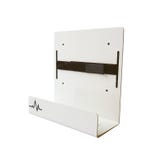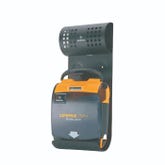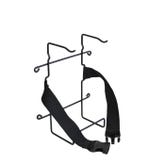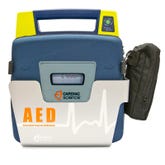5 Things to Consider When Choosing an AED Location
- Feb 12, 2018

When someone suffers from cardiac arrest, their best chance of survival is if an automated external defibrillator (AED) is used.
So the first step any facility should make is to get an AED. But just getting one is not enough. If an AED is going to save a person’s life, it has to be placed where someone can easily locate and access it. After purchasing an AED, it should then be placed with planned consideration.
Here are a few things to have in mind:
1. Once a person has collapsed from cardiac arrest, every minute that passes without treatment significantly lowers their chance of survival. So, AED.com recommends that an AED should be placed within at least 3 minutes of anywhere in the facility. At a brisk walking pace (if it’s safe to, then RUN), it should take 1.5 minutes to get to it and 1.5 minutes to get back.
2. Is the AED in a visible place? If the only AED in a facility is one the secretary has put away in a drawer, then chances are it will take much longer for a bystander to get to it if it were say, I don’t know, maybe right in the middle of the wall where EVERYONE can see it.
3. An AED should be placed where the most concentrated amount of people are. This one is a little self-explanatory, but the reason for this is simple statistics. The higher the amount of people in a particular area = the higher chance of cardiac arrest happening in that area.
4. An AED should be placed near high risk areas. Where are high risk areas? Well depending on the facility, this could be a few places, but it will tend to be a place where the heart will be under more stress. Say it’s a hotel – if it has a gym or swimming pool, than that would be a good spot. Say it’s an office space – if it has a copier that is prone to jamming and makes people want to repeatedly smash it with a baseball bat… Well then that might be a spot to consider.
5. Do you have an AED Cabinet? A cabinet is good to have for two reasons. As pointed out in No. 2, AEDs should be in a visible place, which a cabinet helps with. The other reason is, unfortunately AEDs are commonly stolen. There are not many things more despicable than stealing a life-saving piece of equipment, but it does happen and it has been found that having an AED in a cabinet help deter the chances of that happening.
These are just a few of the things to have in mind when placing your AED. The best idea is to consult professionals when planning AED implementation. AED.com provides services to both help find the best placement strategy and training on how use them.











 CALL US:
CALL US: